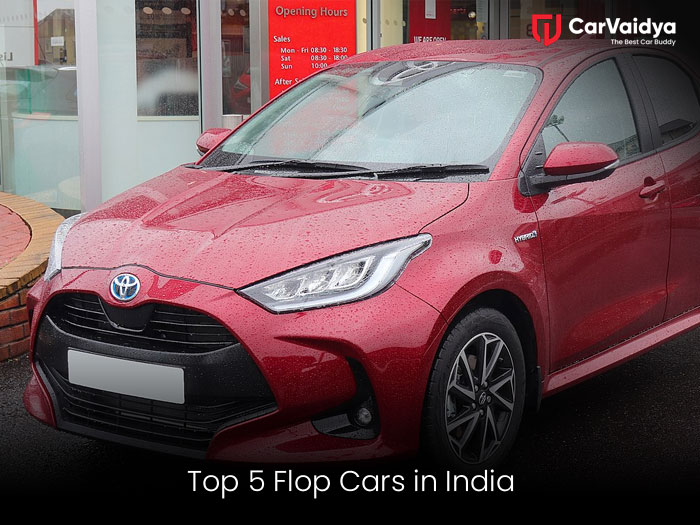Top 5 Flop Cars in India

 By Kuldeep
By Kuldeep- 04/29/2024
Top 5 Flop Cars in India
In India, companies are launching new cars and models on regular basis with including updates on older models of the car. Some cars pick popularity by the car users, there are few cars also which don’t get a fame. In truly sense, some cars have flopped right after their release, leading the OEM or manufacturer to halt the car manufacturing. In this article, we'll discuss about 5 such top flop cars in India.
Maruti Suzuki Kizashi
Maruti Suzuki launched the Kizashi model in India in 2011. Maruti had successfully launched the car, but it failed due to multiple reasons. The main reason for the failure of this car was that it was introduced in India as a Completely Built Unit (CBU).
The price of car was around 16 lakh rupees, which was quite expensive at that time, so people showed no interest in it. At that time, Maruti was not seen as a premium brand. Also, the absence of a diesel engine in the Kizashi was another main reason.
Toyota Yaris
The Toyota Yaris sedan car was launched to compete with cars like the Honda City and Hyundai Verna. However, this car never managed to get a fame in between the users.
The design of this car was good and it launched with attractive features, and an effective automatic gearbox, but it failed to gain a popularity due to high pricing and the absence of a diesel engine. This car is available for purchase in the global market.
Skoda Octavia Combi
Another flop car in the list is the Skoda Octavia Combi. Skoda launched the Octavia Combi model in year 2002 as mid segment of car. However, due to poor sales performance, Skoda decided to discontinue the car.
The Octavia Combi launched with European design, superb practicality, excellent performance, and many outstanding features. However, even with all these functionalities and attributes, this car couldn't generate much traction in the Indian market.
Skoda Yeti
The Yeti model was also launched by the Skoda company with very high expectations. It was launched with European design and German quality, equipped with both 4x2 and 4x4 capabilities and a 2.0-liter engine.
However, since the value of this SUV was approx. equal to the Toyota Fortuner, car owners generally prioritized the Fortuner as a best option. Result was that the Skoda discontinued the production of Yeti model.
Tata Hexa
Tata launched theHexa model in the market with very high expectations but it flopped drastically just after few days of its release. Tata Motors had focused and modernized everything from design to interior cabin features.
Hexa was the choice of a few customers due durability and performance. However, due to strong competition from Mahindra XUV500 and Toyota Innova Crysta, Tata Hexa's sales declined, leading to the discontinuation of the car.
It's very interesting to understand the factors playing a role to the failure of these cars in the Indian market. Price is the one major issue, especially when compared to competing models. Additionally, requirement of diesel engines in some of these cars might have deterred potential buyers, considering the popularity of diesel cars in India. Brand perception and market positioning also played significant roles, as seen with Maruti Suzuki Kizashi being considered as too premium and out of the segment for the Maruti brand image at the time. These factors and insights can be valuable for both automakers and consumers, highlighting the importance of understanding market dynamics and consumer preferences when launching new models.
You can read some other articles
Enhancing Your Driving Experience Installing a Sunroof in Your Car
How to Choose the Right Car Insurance Coverage for Your Needs
Experience the Ultimate Car Detailing Service in Delhi/NCR



